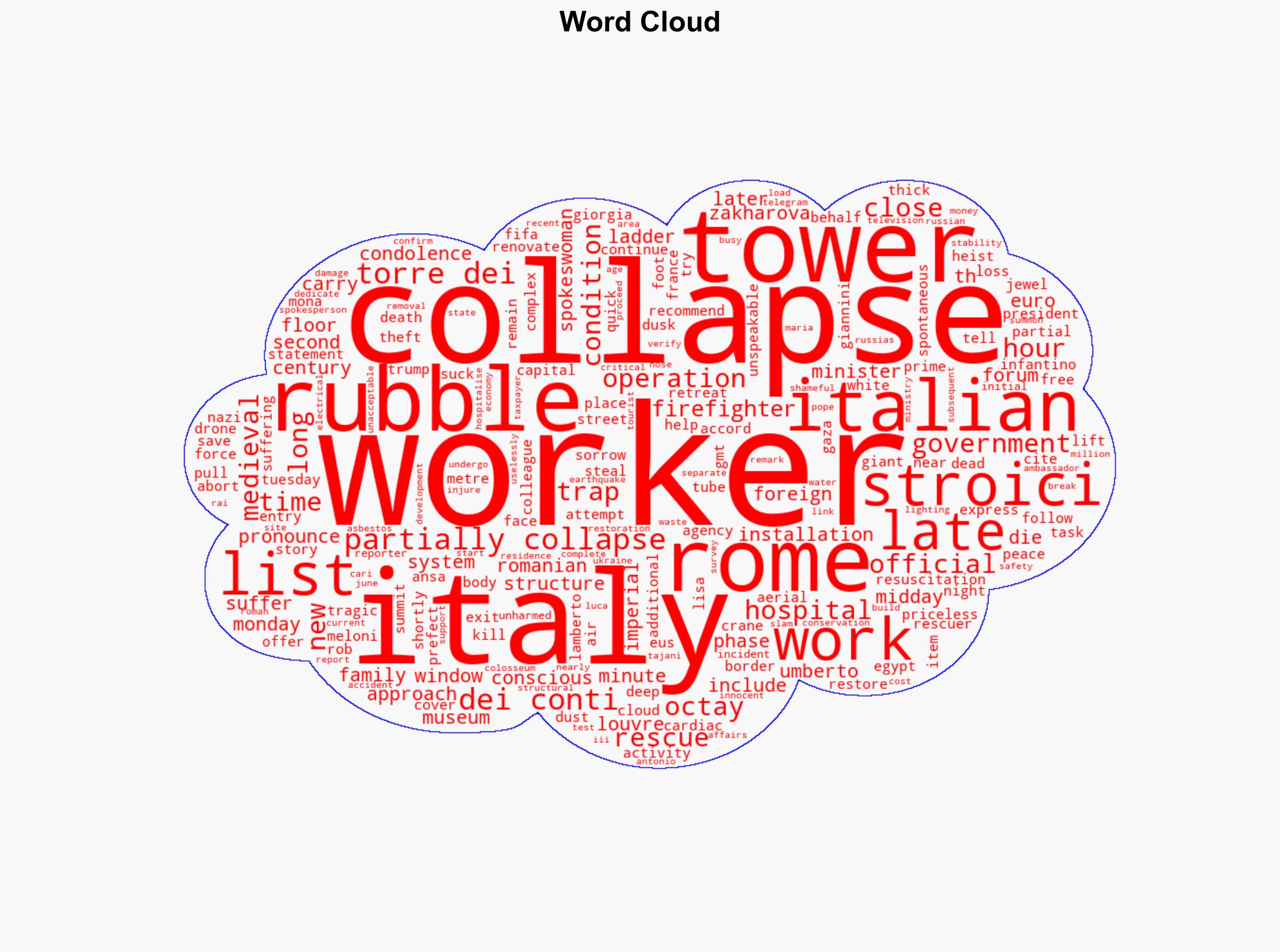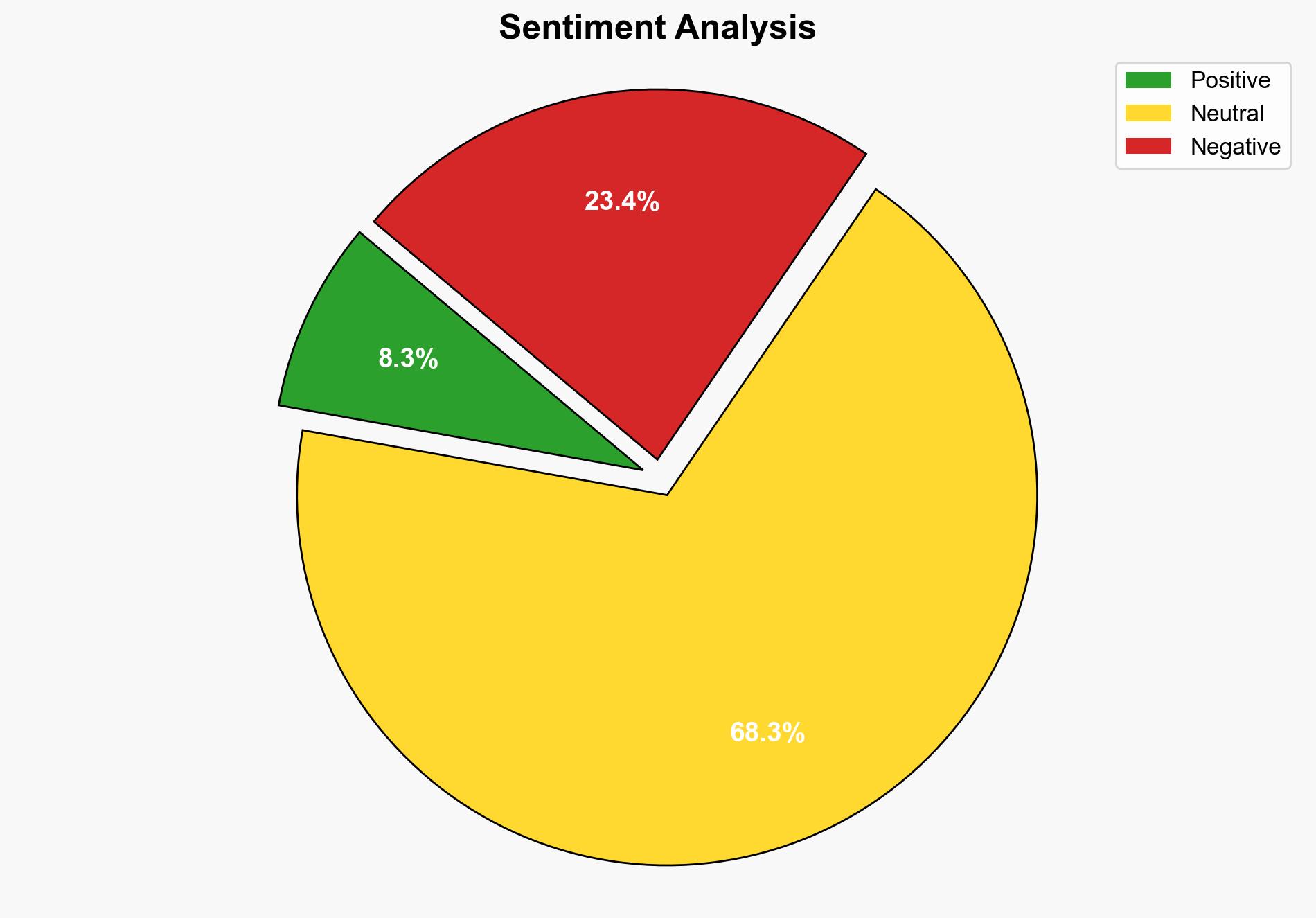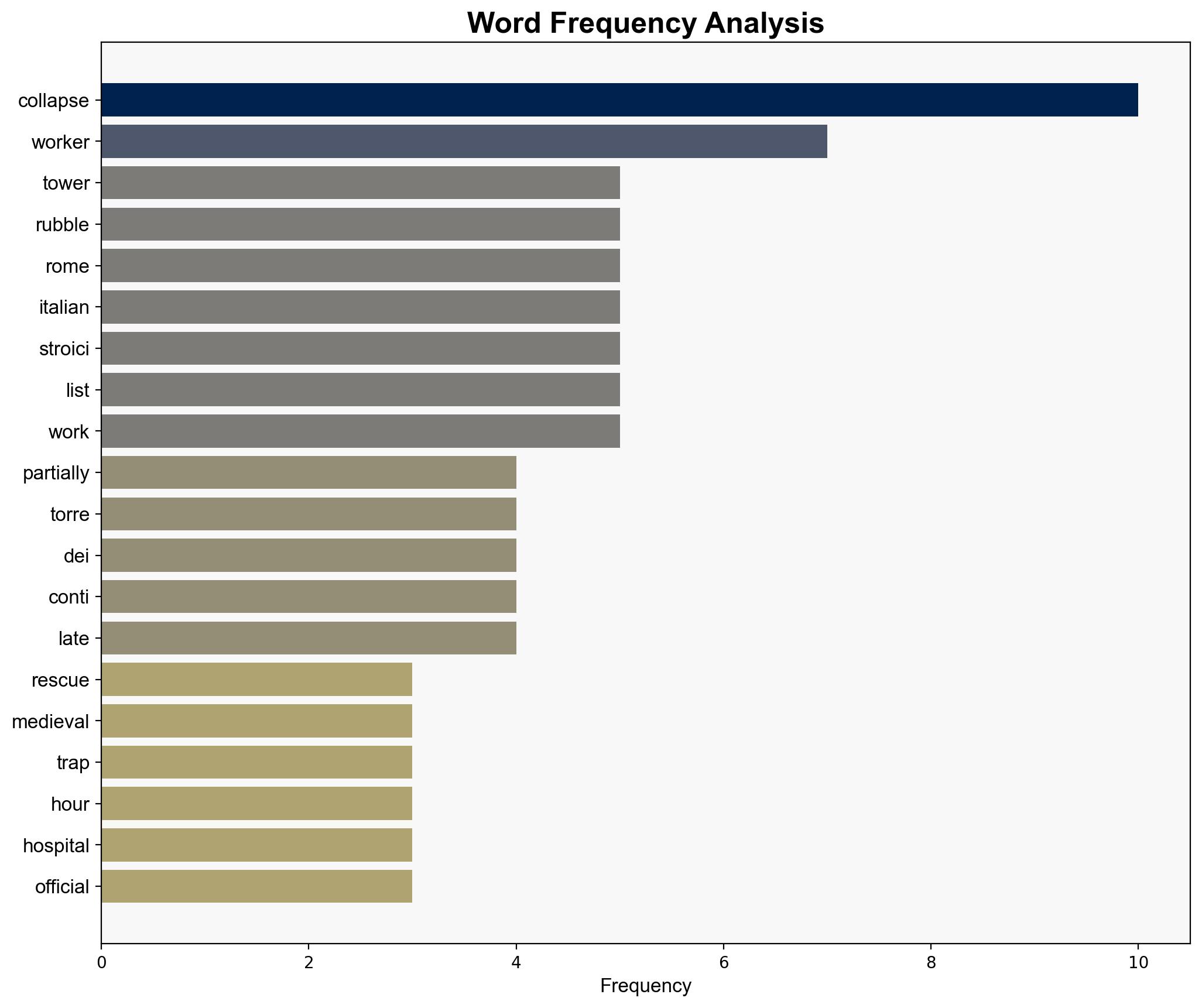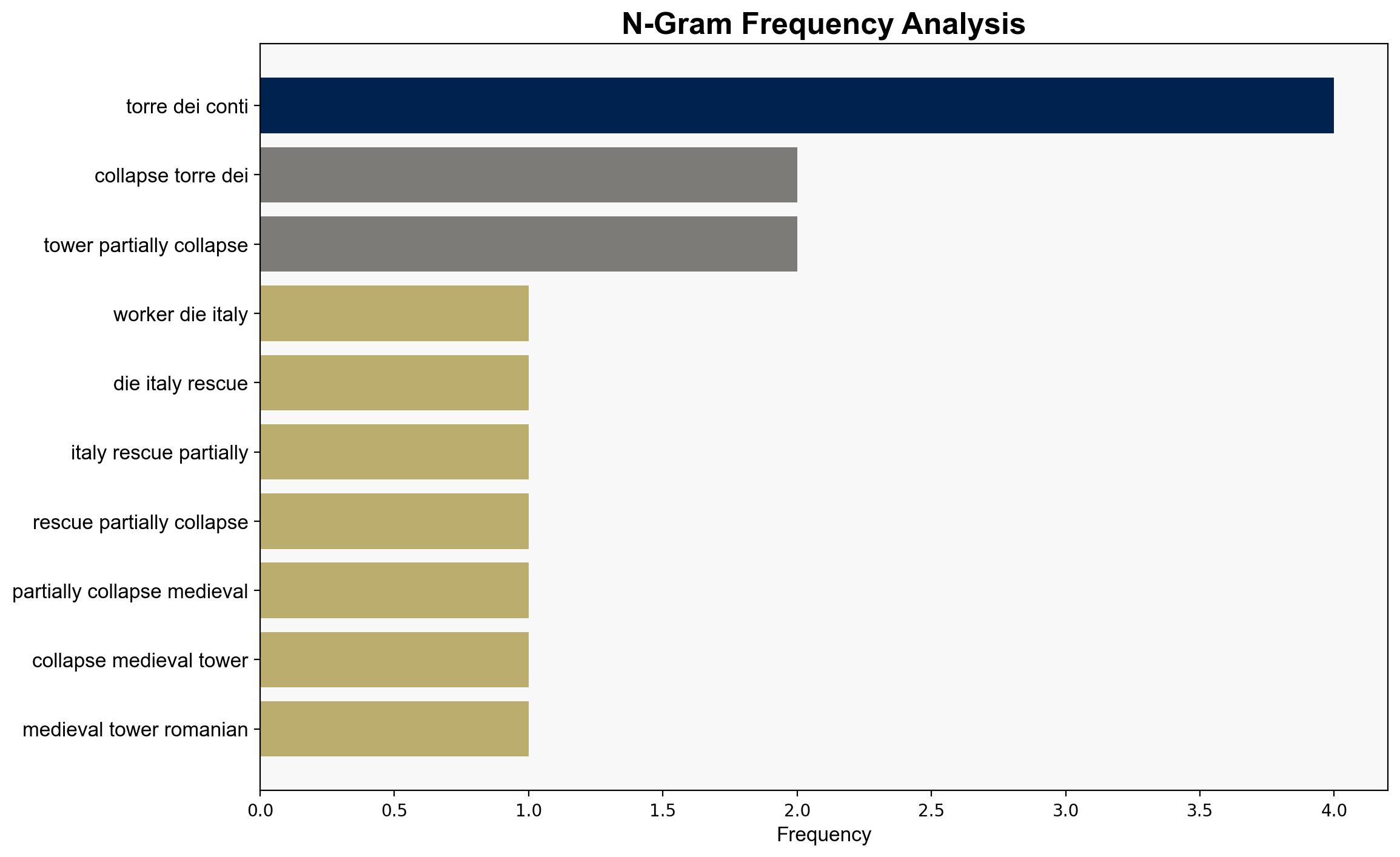Worker dies in Italy after rescue from partially collapsed medieval tower – Al Jazeera English
Published on: 2025-11-04
Intelligence Report: Worker dies in Italy after rescue from partially collapsed medieval tower – Al Jazeera English
1. BLUF (Bottom Line Up Front)
The most supported hypothesis is that the collapse of the Torre dei Conti in Rome was due to structural weaknesses exacerbated by ongoing restoration work. Confidence level is moderate due to limited data on the specific causes of the collapse. Recommended action includes a thorough investigation into the structural integrity of similar historical sites and enhanced safety protocols during restoration projects.
2. Competing Hypotheses
1. **Structural Weakness Hypothesis**: The collapse was primarily due to inherent structural weaknesses in the medieval tower, potentially exacerbated by ongoing restoration work and recent structural surveys.
2. **External Influence Hypothesis**: The collapse was influenced by external factors, possibly including environmental conditions or sabotage, as suggested by the geopolitical context and recent comments linking the incident to Italy’s political stance on Ukraine.
Using ACH 2.0, the structural weakness hypothesis is better supported by the evidence of ongoing restoration work and the historical context of previous collapses. The external influence hypothesis lacks direct evidence but cannot be entirely dismissed due to geopolitical tensions.
3. Key Assumptions and Red Flags
– **Assumptions**: The structural weakness hypothesis assumes that the restoration work did not adequately address all potential vulnerabilities. The external influence hypothesis assumes a high level of geopolitical tension affecting infrastructure security.
– **Red Flags**: The lack of detailed engineering reports on the tower’s condition prior to the collapse and the timing of the collapse during restoration work are notable gaps.
– **Cognitive Bias**: Confirmation bias may lead to overemphasis on structural issues without considering external factors.
4. Implications and Strategic Risks
– **Economic**: Potential increased costs for restoration projects and insurance premiums for historical sites.
– **Geopolitical**: The incident could strain Italy’s domestic and international relations, particularly if external influence is suspected.
– **Psychological**: Public perception of safety in historical areas may be affected, impacting tourism.
– **Cascading Threats**: Similar incidents could occur at other historical sites if structural assessments are not rigorously conducted.
5. Recommendations and Outlook
- Conduct a comprehensive investigation into the collapse, focusing on both structural and potential external factors.
- Enhance safety protocols and structural assessments for ongoing and future restoration projects.
- Scenario-based projections:
- **Best Case**: Improved safety measures prevent future incidents, maintaining public confidence in historical site safety.
- **Worst Case**: Further collapses occur, leading to significant economic and reputational damage.
- **Most Likely**: Incremental improvements in restoration practices and safety measures are implemented.
6. Key Individuals and Entities
– Octay Stroici: Worker who died in the incident.
– Giorgia Meloni: Expressed condolences on behalf of the government.
– Maria Zakharova: Made controversial comments linking the incident to geopolitical issues.
– Antonio Tajani: Criticized Zakharova’s remarks.
7. Thematic Tags
national security threats, infrastructure safety, historical preservation, geopolitical tensions




